

Dark City: London in the 30s. There was another London, before clean air, before the Blitz, before post-war reconstruction.
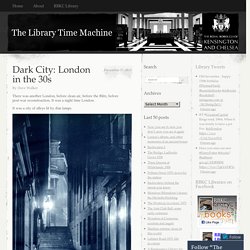
It was a night time London. It was a city of alleys lit by dim lamps. Grand but mysterious arches leading to dark halls and obscure institutions. Secret squares. Forbidding locked doors in isolated precincts Deserted paths. Cyclopean columns. Deserted back streets. Gardens you should never enter. Cul-de-sacs in which someone is waiting for you. Dark alleys, barred windows. There is an occasional welcoming light indicating a place of refuge and a waiting getaway car. . Charles Marville. Horror on the Orient Express returns. [Plan des catacombes] A history of the Orient Express - the truth behind the legend... Each S-type sleeping-car has 10 wood-panelled compartments with either one or two beds (one above the other) plus a washbasin - there are no baths or showers on board.
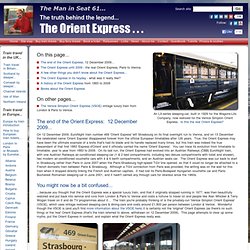
The sleeper compartments convert for daytime use into a compact carpeted sitting room with sofa and small table. There is no lounge car or seats car, at least not this side of Trieste. Agatha Christie needed a 'pullman' salon car for dramatic purposes in 'Murder on the Orient Express', so uses some dramatic licence and writes one into her story. Very wealthy passengers travelling alone might pay for sole occupancy of a 2-bed compartment, but other passengers would share a compartment with another passenger of the same sex.
At Belgrade the following day, the sleepers bound for Berlin or Prague and Oostende or Paris Gare de l'Est are detached and shunted on to a train for Budapest. At Paris Gare de Lyon, three nights out of Istanbul, the 'Simplon Orient Express' terminates. Exploring 20th Century London. Most interesting photos from Vintage Orient Express pool. Interacting with Miniature Railroading. Running a steam locomotive requires much more than knowing what part does what, but it’s a necessary first step.
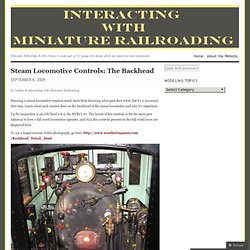
Learn what each control does on the backhead of the steam locomotive and why it’s important. Up for inspection is an OIL fired 2-6-2, the RVRy’s #7. The layout of the controls is for the most part identical to how a full sized locomotive operates, and ALL the controls present on the full sized locos are displayed here. To see a larger version of this photograph, go here: Okay, follow from “A to Z” to learn about each part: A- Atomizer- atomizes fuel oil and sprays it into the firebox to ignite and keep the fire going B- Blower- manages the draft of air flowing from the back of the boiler through the tubes and out the stack, helps complete combustion of the fuel by supplying oxygen.
C- Throttle Lever- Does the obvious. D- Independant Brake Lever, which is used to apply brakes to the drivers and tender trucks to stop the locomotive M-Headlight toggle switches Y- Whistle Cord Like this: Victorian London A-Z Street Index. The third phase of our Victorian London Street Index is now complete and contains over 61,000 references.
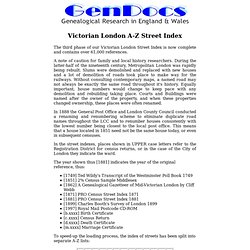
A note of caution for family and local history researchers. During the latter-half of the nineteenth century, Metropolitan London was rapidly being rebuilt. Slums were demolished and replaced with new houses and a lot of demolition of roads took place to make way for the railways. Without consulting contemporary maps, a named road may not always be exactly the same road throughout it's history.
Equally important, house numbers would change to keep pace with any demolition and rebuilding taking place. In 1888 the General Post Office and London County Council conducted a renaming and renumbering scheme to eliminate duplicate road names throughout the LCC and to renumber houses consistently with the lowest number being closest to the local post office. Top names of the 1900s. The GWR Virtual Footplate.
Online Footplate Guide Explore 3822's footplate without getting dirty.
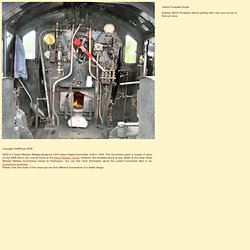
Use your mouse to find out more. Copyright GWSR plc 2009 3822 is a Great Western Railway-designed 2-8-0 heavy freight locomotive, built in 1940. This locomotive spent a couple of years on the GWR and it can now be found at the Didcot Railway Centre. Injector water valve There are two of these, one on either side. Live steam injector valve Steam locomotives have two injectors. Auxiliary steam supply valve to exhaust injector Both this and the Supplementary steam valve (the centre of the three valves at the top of the picture) are operated together to start the exhaust steam injector, once the left-hand water valve (partially hidden by the toolbox at the lower left of the picture) has been turned fully on.
Supplementary live steam supply to exhaust injector Boiler pressure gauge.